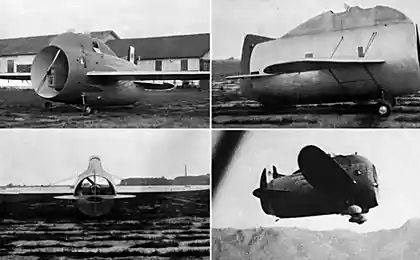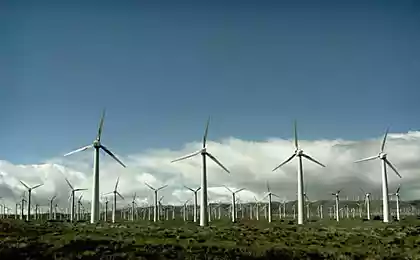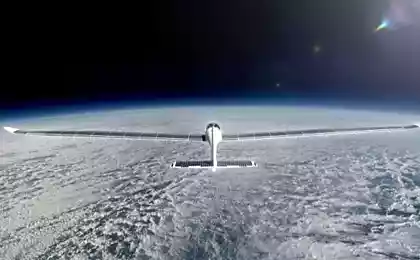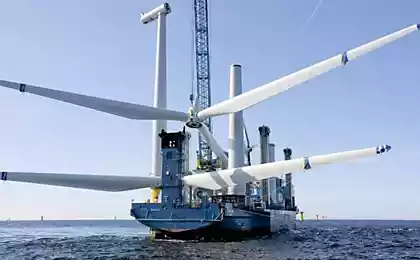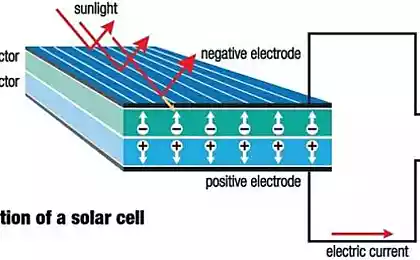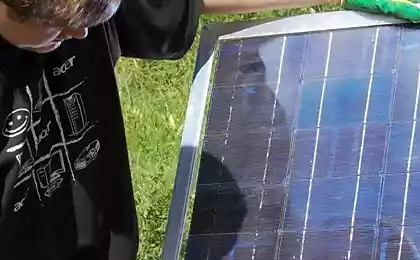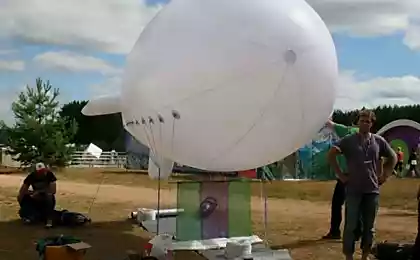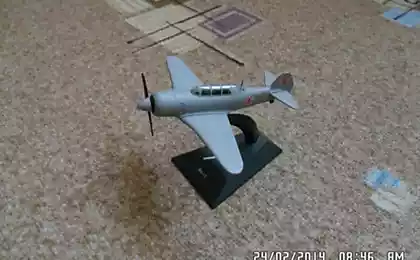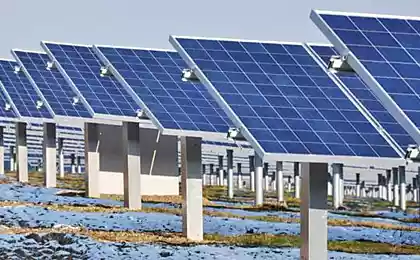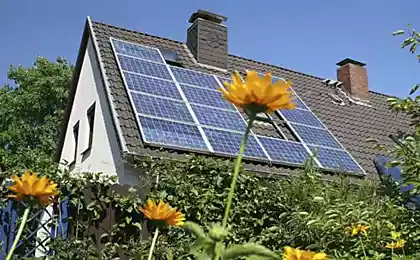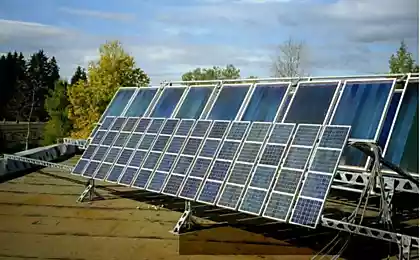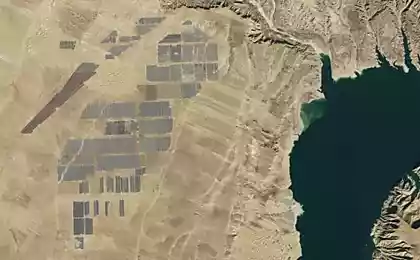518
SolarStratos: a solar-powered aircraft, which will rise into the stratosphere
Today it may seem science fiction, but the Swiss pilot Raphael Domjan (Raphël Domjan) seriously is going to climb electroanalyt with solar panels SolarStratos into the stratosphere – the area where not previously raised in any one plane, said Wired. His goal is to prove that renewable energy can compete with fossil fuels, but have even greater potential.
The course is scheduled for the end of 2018 flight Domian hoping to get on solar-powered aircraft to a height of 25 thousand feet above sea level. After the climb, which will continue for two and a half hours, electric air ship will spend 15 minutes in the stratosphere, and then gradually come down to earth.
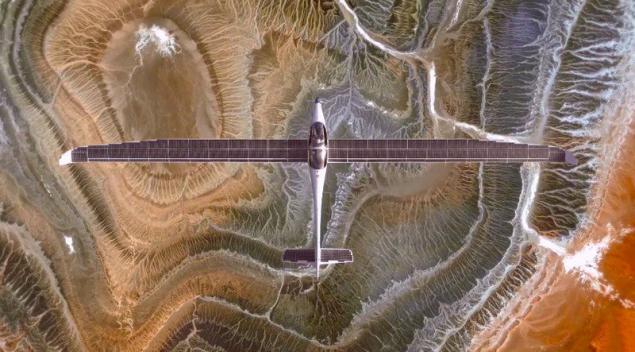
"Our goal is to ensure that the plane climbed as high as possible, and not only that it was "solar" electric, said in an interview with Wired Domian. — In this project we use technology, which can be found in the supermarket, and bring it to perfection".
The pilot noted that the demonstration of solar technologies will advance humanity beyond that can allow carbon fuel and will contain a clear message about the potential of environmentally friendly technologies. "The project opens many possibilities for science, he adds. — Perhaps a study can be used to protect our planet."
Swiss enthusiast needs more money to bring their idea to life. Since the Foundation in 2014 SolarStratos, Damian raised $5 million to establish its experimental electroanalyt. It is expected that the device will be built by specialists of solar aircraft company PC-Solar by the end of this year.
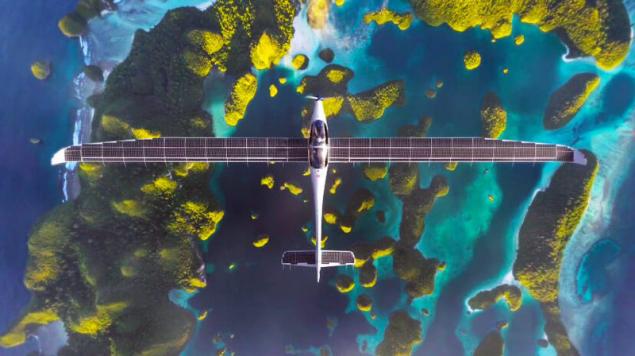
Technical characteristics of electroanalyt SolarStratos
Aircraft weight is 1000 pounds (450 kg), on Board an electric motor with a capacity of 32 kW and a lithium-ion battery with a capacity of 20 kW*h. According to the specifications of developers, the ability of the Autonomous SolarStratos stay in the air will be more than 24 hours. Wingspan two-seater aircraft to 24.9 meters, its length is 8.5 meters. The surface area of PV modules – of 22 square meters.
Although most of the components of the aircraft are produced in mass production, some items are developed from scratch. Thus, the Austrian electric mobility firm Kreisel Electric is working on an experimental lithium ion battery that can safely operate in the harsh conditions of the stratosphere. According to Damiana if battery problems arise in the stratosphere – "this is the end." At the same time, if the mission goes according to plan, SolarStratos will take off, and land with a fully charged battery is exclusively due to the energy of the sun.
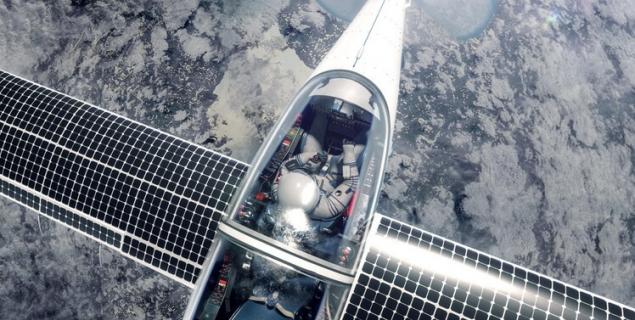
The starting of the test flight is scheduled for late 2016. In the second half of 2017 SolarStratos plans to make his first record to rise above 9 420 meters, breaking the highest point reached another Swiss pilot Bertrand Piccard on the Solar Impulse 2. By the way, Damian not going to carry out this mission alone – it is likely that he will take on Board my colleague [Picard] because, according to him, they are not competitors.
The ultimate goal of the project is the creation by 2021, the commercial version of the aircraft capable to put in the stratosphere the pilot and two passengers. Moreover, it is expected that the cost of such a flight must not exceed the use of balloons. Now the team plans to collect an additional $5 million to prepare the aircraft for the first historical record. published
Source: ecotechnica.com.ua/transport/1754-solarstratos-samolet-na-solnechnykh-batareyakh-kotoryj-podymitsya-v-stratosferu.html
The course is scheduled for the end of 2018 flight Domian hoping to get on solar-powered aircraft to a height of 25 thousand feet above sea level. After the climb, which will continue for two and a half hours, electric air ship will spend 15 minutes in the stratosphere, and then gradually come down to earth.

"Our goal is to ensure that the plane climbed as high as possible, and not only that it was "solar" electric, said in an interview with Wired Domian. — In this project we use technology, which can be found in the supermarket, and bring it to perfection".
The pilot noted that the demonstration of solar technologies will advance humanity beyond that can allow carbon fuel and will contain a clear message about the potential of environmentally friendly technologies. "The project opens many possibilities for science, he adds. — Perhaps a study can be used to protect our planet."
Swiss enthusiast needs more money to bring their idea to life. Since the Foundation in 2014 SolarStratos, Damian raised $5 million to establish its experimental electroanalyt. It is expected that the device will be built by specialists of solar aircraft company PC-Solar by the end of this year.

Technical characteristics of electroanalyt SolarStratos
Aircraft weight is 1000 pounds (450 kg), on Board an electric motor with a capacity of 32 kW and a lithium-ion battery with a capacity of 20 kW*h. According to the specifications of developers, the ability of the Autonomous SolarStratos stay in the air will be more than 24 hours. Wingspan two-seater aircraft to 24.9 meters, its length is 8.5 meters. The surface area of PV modules – of 22 square meters.
Although most of the components of the aircraft are produced in mass production, some items are developed from scratch. Thus, the Austrian electric mobility firm Kreisel Electric is working on an experimental lithium ion battery that can safely operate in the harsh conditions of the stratosphere. According to Damiana if battery problems arise in the stratosphere – "this is the end." At the same time, if the mission goes according to plan, SolarStratos will take off, and land with a fully charged battery is exclusively due to the energy of the sun.

The starting of the test flight is scheduled for late 2016. In the second half of 2017 SolarStratos plans to make his first record to rise above 9 420 meters, breaking the highest point reached another Swiss pilot Bertrand Piccard on the Solar Impulse 2. By the way, Damian not going to carry out this mission alone – it is likely that he will take on Board my colleague [Picard] because, according to him, they are not competitors.
The ultimate goal of the project is the creation by 2021, the commercial version of the aircraft capable to put in the stratosphere the pilot and two passengers. Moreover, it is expected that the cost of such a flight must not exceed the use of balloons. Now the team plans to collect an additional $5 million to prepare the aircraft for the first historical record. published
Source: ecotechnica.com.ua/transport/1754-solarstratos-samolet-na-solnechnykh-batareyakh-kotoryj-podymitsya-v-stratosferu.html


